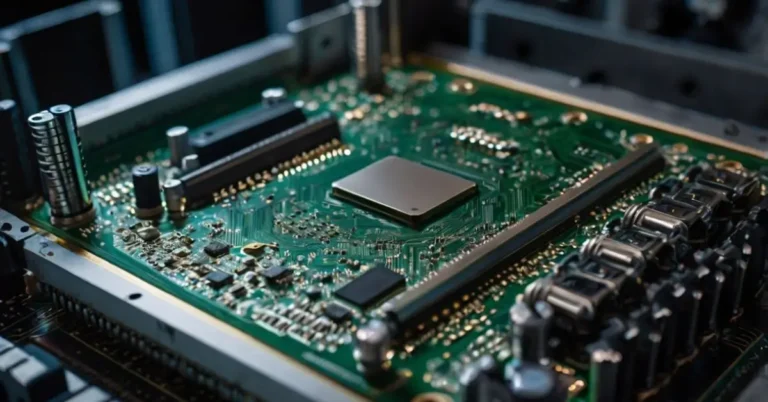Deep learning has emerged as a pivotal component driving advancements across industries in the ever-evolving landscape of artificial intelligence. At the heart of high-performance deep learning applications lies the significant role of graphics processing units (GPUs). These powerful components are engineered to handle the large computations deep learning frameworks require. As the demand for more sophisticated AI applications grows, the need for GPUs with advanced capabilities becomes increasingly critical. This article explores the importance of advanced GPU capabilities in enhancing deep learning applications, examining how they contribute to faster processing, efficient resource utilization, and overall improvements in model performance.
The Importance of GPUs in Deep Learning
GPUs have revolutionized the computational processes involved in deep learning by providing the necessary power for complex operations. Unlike traditional CPUs designed for general-purpose computing, GPUs are tailored for parallel processing, making them ideal for handling the vast amounts of data involved in deep learning tasks. In a workstation environment, GPUs facilitate the concurrent processing of multiple tasks, accelerating the training of deep learning models and significantly reducing the time required for data analysis.
Deep learning algorithms often require processing hundreds of thousands of data points simultaneously, a task GPUs excel at due to their architecture. Their ability to execute parallel operations efficiently ensures that models can be trained rapidly, enabling faster iterations and more frequent updates. This capability is essential for developing models that can keep pace with the rapid evolution of AI technologies, enhancing the accuracy and reliability of AI-powered solutions.
Benefits of Advanced GPU Capabilities
The advancements in GPU capabilities have unlocked numerous benefits for deep learning applications. High-performance GPUs offer enhanced computational power, enabling the execution of complex neural network models with greater speed and precision. This advancement leads to reduced training times and lower latency, improving the responsiveness of AI systems.
Moreover, advanced GPUs enhance the scalability of deep learning models, allowing developers to manage larger datasets and more intricate architectures without compromising performance quality. This scalability is crucial for handling the increasing complexity of AI tasks, supporting the development of models that can manage real-world data volume and diversity. By optimizing the efficiency of deep learning processes, advanced GPUs contribute to more accurate predictions and decisions, reinforcing the application of AI across various fields such as medical diagnosis, autonomous systems, and financial forecasting.
Optimizing Deep Learning Models with GPU Architectures
The architecture of GPUs is instrumental in optimizing deep learning models. They are designed to execute numerous operations simultaneously, a capability that traditional processors lack. This parallel processing power allows GPUs to manage the computation of millions of variables concurrently, making them indispensable in the training and inference stages of deep learning models.
By leveraging the architecture of GPUs, developers can implement more efficient algorithms that maximize throughput and minimize processing time. The ability to handle multiple data streams and execute operations in parallel enables models to perform complex computations at a remarkable speed. This optimization is critical for implementing deep learning models that require real-time processing, such as those used in autonomous vehicles and facial recognition systems.
The Role of Memory Management in GPUs
Effective memory management is fundamental to maximizing GPU performance in deep learning applications. As models become more complex, the demand for memory increases exponentially. Advanced GPUs are equipped with sophisticated memory management capabilities that allocate resources dynamically, ensuring efficient use of available memory.
Memory management techniques, such as shared memory within GPU cores, hierarchical memory structures, and memory prefetching, enhance data access speeds. These techniques facilitate smoother data retrieval and transfer, reducing bottlenecks and improving throughput. By optimizing memory allocation and minimizing data movement, GPUs can execute deep learning tasks more efficiently, leading to faster model training and reduced operational costs.
Innovations in Parallel Processing
Parallel processing, a hallmark of GPU technology, has seen significant innovations that further enhance deep learning applications. Advanced GPUs utilize multiple cores to perform simultaneous computations, dramatically accelerating data processing. This concurrency is integral to the performance of modern deep learning models, enabling them to process vast datasets quickly and efficiently.
Innovations have provided developers with powerful tools to harness the full potential of GPUs. These platforms offer a comprehensive suite of programming resources that facilitate parallel processing optimization, ensuring that deep learning models can achieve their maximum potential performance. By utilizing these innovations, developers can implement algorithms that effectively exploit the parallel nature of GPUs, leading to faster computation times and more accurate model predictions.
Energy Efficiency and GPU Advancements
With the growing emphasis on sustainability, energy efficiency has emerged as a critical consideration in the development of GPUs for deep learning applications. Advanced GPU architectures are designed to balance performance with power consumption, ensuring that high computational power does not come at the expense of increased energy usage. This balance is achieved through dynamic voltage and frequency scaling techniques, which optimize energy consumption without compromising computational efficiency.
Investments in energy-efficient GPU technologies contribute to the sustainability of AI solutions by reducing the carbon footprint associated with large-scale computations. These advancements are critical for supporting the growing demand for AI applications, ensuring that deep learning processes are robust and environmentally responsible. By focusing on energy efficiency, developers can create high-performing and eco-friendly solutions, aligning with global efforts to promote sustainable technological advancements.
Conclusion
Advanced GPU capabilities are reshaping the landscape of deep learning applications, offering unprecedented opportunities for innovation and efficiency. GPUs have become integral to the successful deployment of deep learning models through enhancements in computational power, parallel processing, memory management, and energy efficiency. As the demand for sophisticated AI solutions continues to grow, the role of GPUs will only become more pivotal, driving the development of more powerful, efficient, and sustainable deep learning applications. By embracing these advancements, researchers and developers can harness the full potential of AI to address complex challenges and foster progress across various industries.

